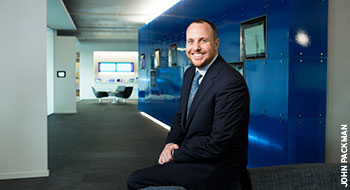
It’s sometimes difficult for employees to communicate in a large company. But Microsoft Canada thinks it has found a solution using enterprise social media.
“Ultimately, the goal is to improve communication and collaboration between employees and, therefore, improve the overall employee engagement and productivity within a company,” says Brian Morgan, the company’s senior HR manager.
The company uses Yammer, a private and secure social network launched in 2008 and then acquired by Microsoft four years later.
The product doesn’t replace other communication strategies but complements the ones Microsoft is already using, such as emails, town halls and the company intranet.
Social networking tools are good for productivity, too. They help reduce the overall clutter of emails back and forth. And documents can be shared more broadly in a secure manner if you need to restrict access.
A 2012 McKinsey Global Institute report predicts that by “fully implementing social technologies, companies have an opportunity to raise the productivity of interaction workers—high-skill knowledge workers, including managers and professionals—by 20% to 25%.”
Share and Collaborate
Microsoft has set up a community within Yammer where its Canadian managers can get peer support. “While we may not be able to have the same direct touch point with all of the managers we have here in Canada, with the small number of HR resources that we’ve had, what we’ve found is that [managers] are now becoming a support for themselves,” says Morgan.
The company gives its employees a lot of flexibility in the way they work, and many work from home. Using a social network has improved their collaboration and ability to connect with others, he adds.
The McKinsey study backs that up. Interaction workers (those who interact with other people often, such as managers and salespeople) spend about 28% of the workweek managing email and nearly 20% looking for internal information or co-workers who can help with certain tasks.
“But when companies use social media internally, messages become content; a searchable record of knowledge can reduce, by as much as 35%, the time employees spend searching for company information,” the report states.
Communication and collaboration will become even more important as more employees work remotely. A 2013 Forrester Research report says “the anytime, anywhere work trend is just getting started.”
Open Dialogue
Microsoft used to hold all-employee meetings where executives gave traditional PowerPoint presentations. Now, members of the leadership team sign into the social network. Employees who aren’t able to attend in person have an opportunity to ask questions and get responses in real time.
Having an open forum means the company has to be prepared to tackle tough topics. For example, says Morgan, questions were posted on the social network on how the company was changing compensation for a specific group of employees.
“What it allowed us to do is to pull this group of employees together to provide them with some more education on what we knew at the time and to alleviate concerns they had,” Morgan explains.
New employees get a chance to develop their own network even before their first day of work. On top of receiving introductory emails, “they’re invited to join a private Yammer group that’s externally facing that allows them to be interacting before they even walk through the door,” he says.
The new hires are connected with others starting with the company who will also be part of the orientation program. They also have the opportunity to ask questions that come up when any new employee starts, such as how to get access to online pay stubs or order business cards.
“They can be on the site before they even set foot in the actual building to work,” Morgan explains. “They’re connected with Microsoft, and we start engaging them in our company culture before they actually start working for us.”
Craig Sebastiano is associate editor of BenefitsCanada.com.
Get a PDF of this article.
